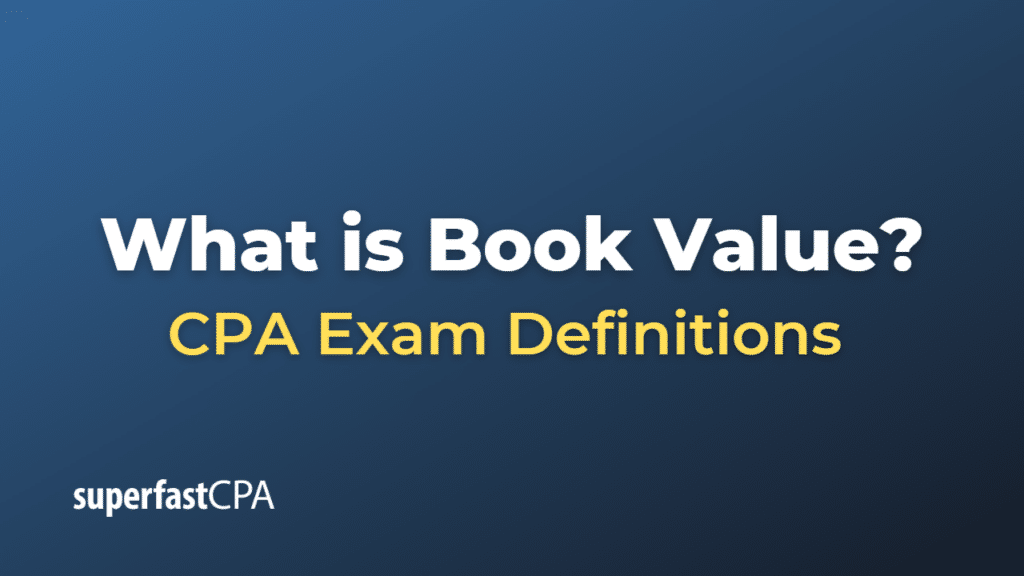Book Value
Book value, also known as carrying value or net asset value, is the value of an asset or a company as recorded on its balance sheet. It represents the difference between the original cost of the asset and the accumulated depreciation or amortization, taking into account any impairment charges or other adjustments. In other words, the book value of an asset is its original cost minus the accumulated depreciation, which reflects the wear and tear, usage, or obsolescence of the asset over time.
For a company, the book value is calculated by subtracting total liabilities from total assets. This figure represents the net worth of the company from an accounting perspective and is an important metric for investors, as it provides an estimate of what the company would be worth if it were to liquidate its assets and pay off its liabilities.
It’s important to note that the book value of an asset or a company may not always reflect its fair market value, as the book value is based on historical cost and may not take into account factors such as market demand, competitive environment, or the potential for future growth. In many cases, the market value of a company (as determined by its market capitalization) can be significantly higher or lower than its book value.
In summary, book value is an accounting measure that reflects the net worth of an asset or a company based on its balance sheet, taking into account historical cost, depreciation, and other adjustments. It is a useful metric for investors, but it should be considered alongside other valuation methods and market factors when assessing the true value of an asset or a company.
Example of Book Value
Let’s consider a hypothetical example to illustrate the concept of book value for a company.
Imagine that Company ABC has the following financial information on its balance sheet:
Total Assets: $1,000,000 Total Liabilities: $600,000
To calculate the book value (net worth) of Company ABC, you would subtract its total liabilities from its total assets:
Book Value = Total Assets – Total Liabilities
Book Value = $1,000,000 – $600,000 = $400,000
In this example, Company ABC’s book value is $400,000, which represents the net worth of the company from an accounting perspective. This figure suggests that if Company ABC were to liquidate all its assets and pay off its liabilities, the remaining value available to the shareholders would be $400,000.
Now, let’s consider the book value of a specific asset owned by Company ABC. Suppose the company purchased a piece of machinery for $100,000 with an estimated useful life of 10 years and no residual value. The company uses the straight-line depreciation method.
Annual Depreciation Expense = (Original Cost – Residual Value) / Useful Life
Annual Depreciation Expense = ($100,000 – $0) / 10 = $10,000
After 5 years, the accumulated depreciation for the machinery would be:
Accumulated Depreciation = Annual Depreciation Expense × Number of Years
Accumulated Depreciation = $10,000 × 5 = $50,000
To calculate the book value of the machinery after 5 years, you would subtract the accumulated depreciation from the original cost:
Book Value = Original Cost – Accumulated Depreciation
Book Value = $100,000 – $50,000 = $50,000
In this example, the book value of the machinery after 5 years would be $50,000, which reflects the remaining value of the asset after accounting for depreciation.
These examples demonstrate the concept of book value for both a company and an individual asset, highlighting its importance in assessing the net worth of a company and the remaining value of an asset after accounting for depreciation or other adjustments.













